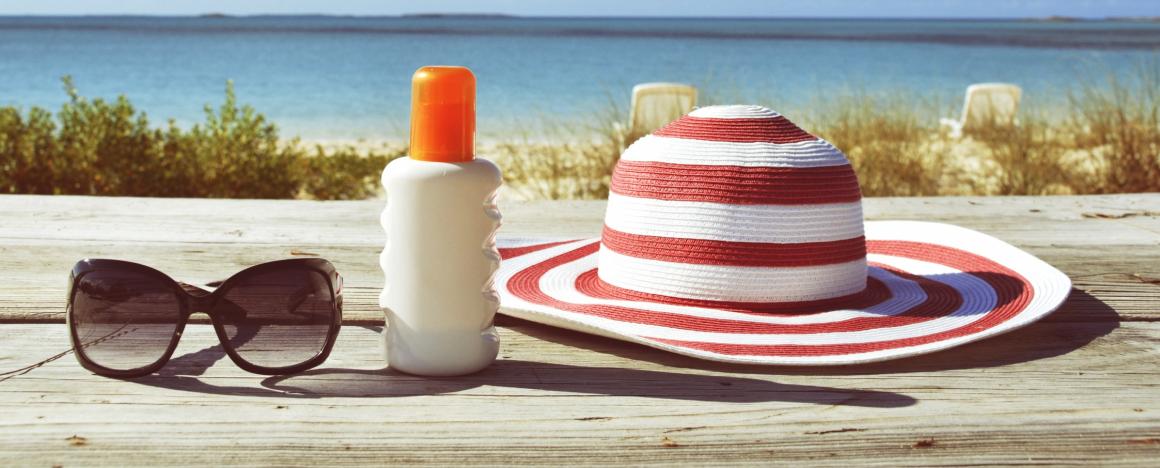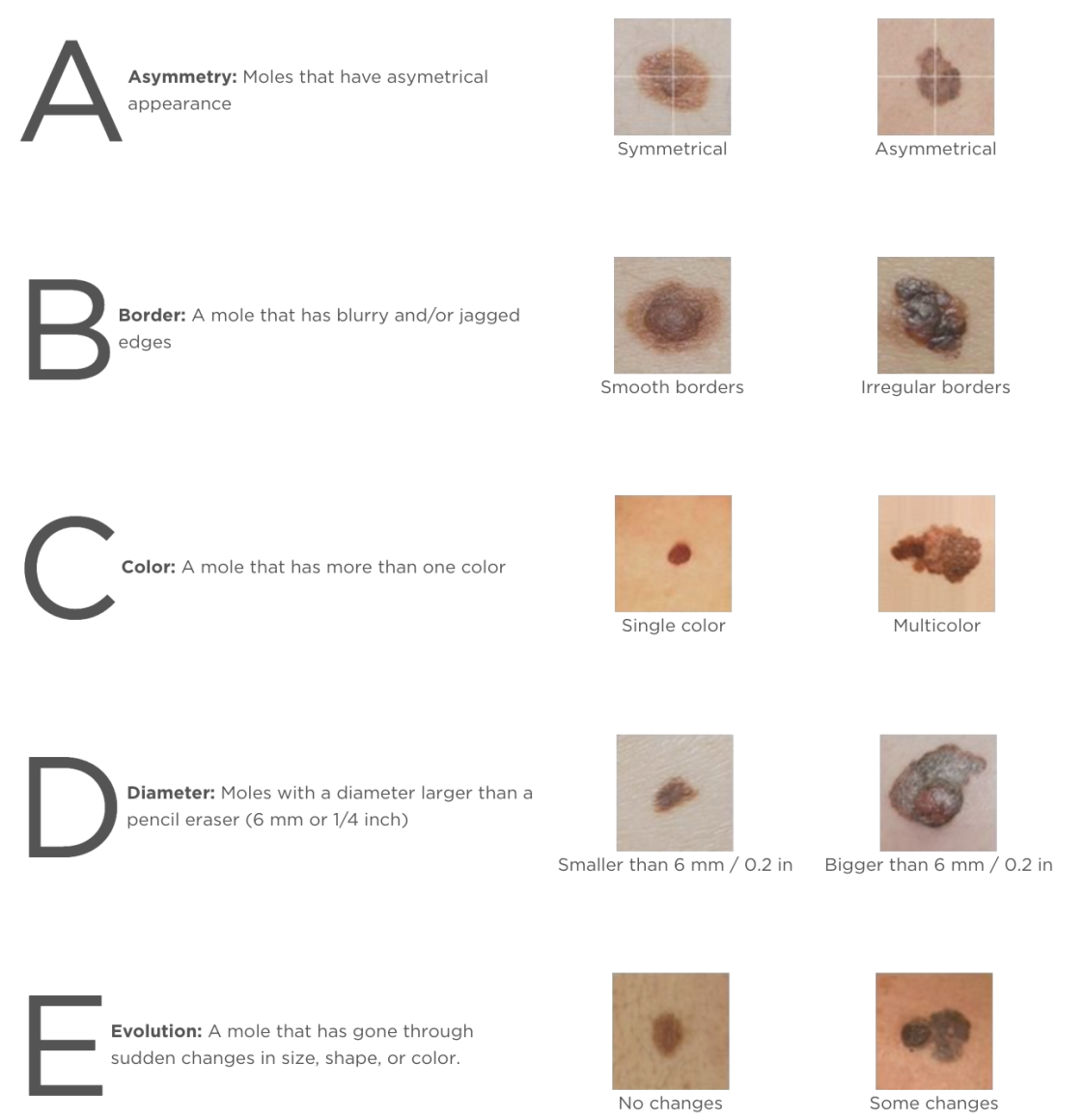-
About
- Departments & Offices
-
Academics
- Physician Assistant
- Special Master’s (MBS)
-
Admissions & Financial Aid
- Tuition & Fees
-
Student Life
-
Research
- Research Labs & Centers
-
Local & Global Engagement
- Global Health Program
Sun Safety Resources

Skin Cancer
Skin cancer is the most common cancer in the United States. The two most common skin cancers (basal cell and squamous cell carcinomas) are highly curable but can be disfiguring and costly. Melanoma (the third most common skin cancer) may be deadly. Ultraviolet (UV) radiation from the sun or from a tanning device can cause dangerous, lasting damage to your skin.
General risk factors include:
- Light skin, or skin that burns, freckles, or reddens easily; but skin of all colors can get skin cancer
- Large number of moles
- Personal or family history of skin cancer
- History of sun exposure
- History of sunburns, especially in early life
- History of indoor tanning
- the average tanning bed gives of 2 to 10 times more UVA radiation than the sun
- using tanning beds before the age of 35 increases a person's risk for developing melanoma by 75%
ABCDEs of Melanoma
Melanoma is the deadliest form of skin cancer. When detected early, melanoma is highly treatable. Know your skin and perform a self-exam each month. You can even ask a partner or friend to look at your back and scalp.
If you see any of these warning signs, show them to your provider right away:
- Asymmetry: A mole that have an asymmetrical appearance
- Border: A mole that has blurry and/or jagged edges
- Color: A mole that has more than one color
- Diameter: A mole with a diameter larger than a pencil eraser (6 mm or 1/4 inch)
- Evolution: A mole that has gone through changes in size, shape, or color
Learn more about the ABCDEs of melanoma and how to perform a skin self-exam.
Skin Cancer in People of Color
Even if you have a darker skin tone, always tan or rarely burn, you can still get skin cancer. Skin cancer is often diagnosed later in people of color, making it harder to treat. Melanoma in people of color most often occurs on the palms of the hands, soles of the feet, under the nail (subungual) and in the nail areas. No matter your skin tone, UV radiation can lead to skin damage, premature aging, and hyperpigmentation. Protecting your skin is important!
Preventing UV Light Exposure
Check the UV Index - Know Before You Go!
- The UV index can be found in most weather apps and from the National Weather Service.
- Dermatologists recommend sun protection when the UV index is 3 and above
Seeking shade
- Find shade under a dense tree canopy, shade sail, or pavilion
- Carry a sun umbrella for personal shade
- Use a pop-up UV shelter when at the beach or park
- Whenever possible, stay out of the sun from 10 AM - 4 PM when UV radiation is the strongest
Sunscreen
- Broad spectrum UVA and UVB, SPF 30 or higher
- Reapplication is necessary every 2 hours and after swimming, sweating, or toweling off
- Most people do not put on enough sunscreen–aim for one ounce, which is about a shot glass or palmful
Protective clothing
- Long sleeves/pants with a dense weave or built in UPF
- Wide-brimmed hat
- Closed-toe shoes and socks that cover the ankle
Sunglasses
- Choose sunglasses with a UV protective coating
- Wearing sunglasses helps protect the delicate skin around our eyes
- UV rays can also increase risk of cataracts & macular degeneration–it makes sense to protect your eyes!
Further Resources
- National Council on Skin Cancer Prevention
- US Environmental Protection Agency Sun Safety Resources
- Centers for Disease Control and Prevention: Sun Safety
- Skin Cancer Foundation Skin Cancer facts & Statistics
- American Academy of Dermatology Association: How to Prevent Skin Cancer
- American Academy of Dermatology Association: Dangers of Indoor Tanning
- MRF Educator Course for Healthcare Students
- IMPACT Melanoma
